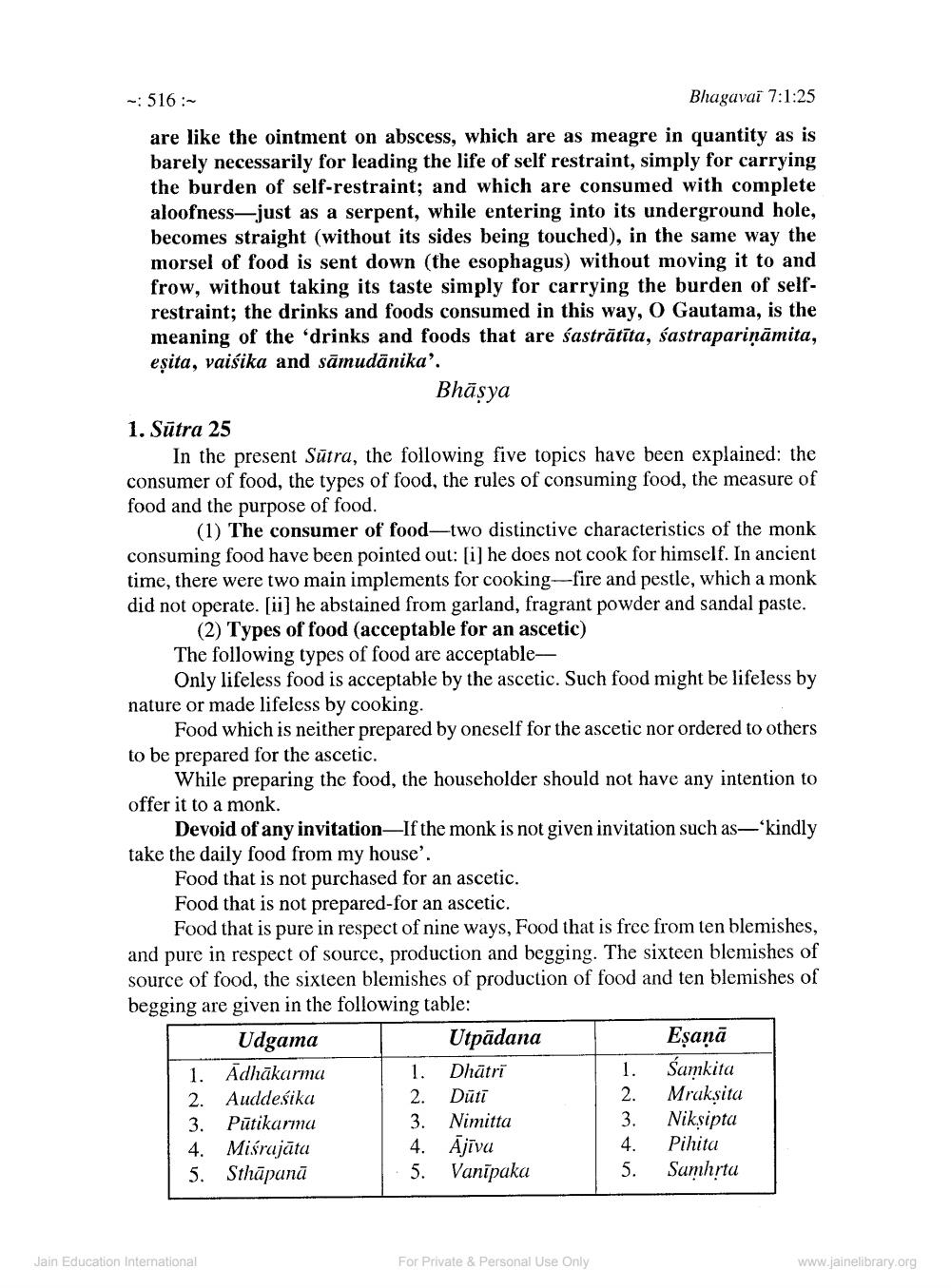________________
~: 516
Bhagavat 7:1:25
are like the ointment on abscess, which are as meagre in quantity as is barely necessarily for leading the life of self restraint, simply for carrying the burden of self-restraint; and which are consumed with complete aloofness-just as a serpent, while entering into its underground hole, becomes straight (without its sides being touched), in the same way the morsel of food is sent down (the esophagus) without moving it to and frow, without taking its taste simply for carrying the burden of selfrestraint; the drinks and foods consumed in this way, O Gautama, is the meaning of the 'drinks and foods that are sastrātīta, śastrapariņāmita, eşita, vaisika and sämudānika".
Bhāṣya
1. Sütra 25
In the present Sutra, the following five topics have been explained: the consumer of food, the types of food, the rules of consuming food, the measure of food and the purpose of food.
(1) The consumer of food-two distinctive characteristics of the monk consuming food have been pointed out: [i] he does not cook for himself. In ancient time, there were two main implements for cooking-fire and pestle, which a monk did not operate. [ii] he abstained from garland, fragrant powder and sandal paste. (2) Types of food (acceptable for an ascetic)
The following types of food are acceptable
Only lifeless food is acceptable by the ascetic. Such food might be lifeless by nature or made lifeless by cooking.
Food which is neither prepared by oneself for the ascetic nor ordered to others to be prepared for the ascetic.
While preparing the food, the householder should not have any intention to offer it to a monk.
Devoid of any invitation-If the monk is not given invitation such as-kindly take the daily food from my house".
Food that is not purchased for an ascetic. Food that is not prepared-for an ascetic.
Food that is pure in respect of nine ways, Food that is free from ten blemishes, and pure in respect of source, production and begging. The sixteen blemishes of source of food, the sixteen blemishes of production of food and ten blemishes of begging are given in the following table:
Udgama
1. Adhakarma
2. Auddesika
3. Patikarma
4. Miśrajāta
5. Sthapana
Jain Education International
Utpadana
1. Dhātri
2. Dūtī
3. Nimitta
4. Ajiva
5. Vanipaka
For Private & Personal Use Only
Eṣaṇā
1. Samkita
2.
Mraksita
3.
Nikṣipta
4.
Pihita
5.
Samhṛta
www.jainelibrary.org




